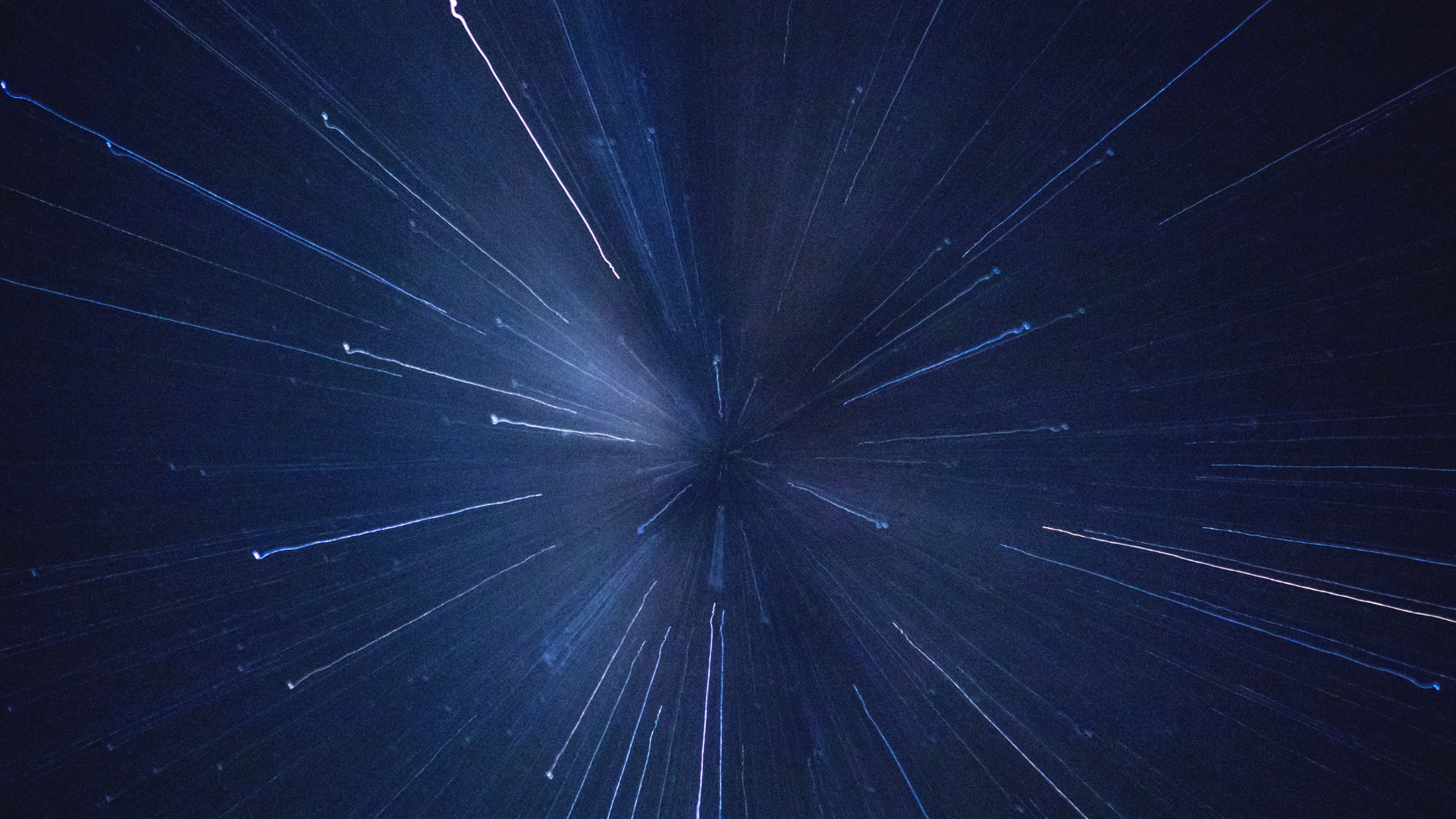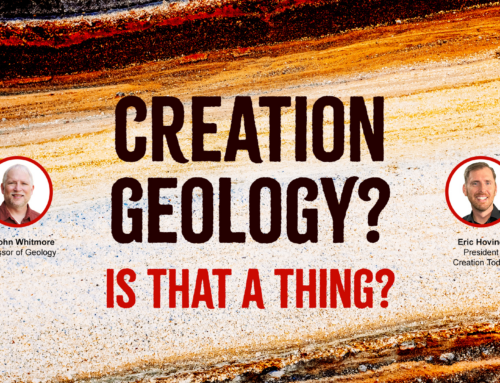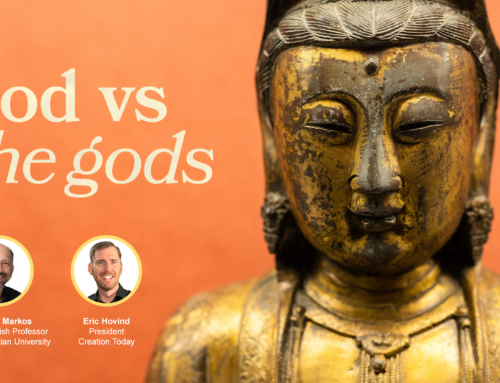 The purpose of this article is to give more thorough details about the four main competing cosmologies used by creationists to explain the distant starlight issue. The issue itself was explained in a simplified summary article. Briefly, the other article explained that the issue is about explaining how starlight could have traveled across millions of light years of space, if the universe is only 6,000 years old. I explained that the Bible does not give a definitive explanation for this. It merely affirms that it happened. It is therefore acceptable to build scientific models in an attempt to explain. We will hold loosely to the models, while holding tightly to Scripture. Secular astrophysicists, quite rightly, frequently amend their models. Skeptics reading this article should extend the same courtesy to creationist astrophysicists, who should not be expected to get everything in their models right the first time.
The purpose of this article is to give more thorough details about the four main competing cosmologies used by creationists to explain the distant starlight issue. The issue itself was explained in a simplified summary article. Briefly, the other article explained that the issue is about explaining how starlight could have traveled across millions of light years of space, if the universe is only 6,000 years old. I explained that the Bible does not give a definitive explanation for this. It merely affirms that it happened. It is therefore acceptable to build scientific models in an attempt to explain. We will hold loosely to the models, while holding tightly to Scripture. Secular astrophysicists, quite rightly, frequently amend their models. Skeptics reading this article should extend the same courtesy to creationist astrophysicists, who should not be expected to get everything in their models right the first time.
The four main models are: 1) Mature creation, 2) Decay of the speed of light (CDK), 3) Anisotropic Synchrony Conventions, and 4) Gravitational Time Dilation.
In this article, I will attempt to give greater details of all four models, and explain my reasons for rejecting three of them, and accepting one. To avoid confusion — this article is not meant to be a murder mystery! — I will state up front that I find the fourth model (Gravitational Time Dilation) to be the most satisfying, in my opinion.
Finally, I will show that the Big Bang Theory has its own starlight problem, which it does not explain well.
This article is headed as semi-technical. I am a teacher, rather than an astrophysicist. I will therefore reference more technical articles, where available, for those who want to study this issue to an even deeper level.
Just a note for the pedants: I am referring to the various models here as creationist cosmologies, because that is the “popular” term used. Because the models concern the origins of the universe, it would be more correct to refer to them as creationist cosmogonies. I hope that readers will forgive my colloquialism.
1. Mature Creation of Stars
This is probably one of the earliest of the creationist cosmologies. It relies on the concept of mature creation. Now, to those who take Genesis seriously, mature creation is a given. For example, if you could take a time machine back to, let’s say, ten days after creation, and managed to see Adam, you would probably assume that he looked mature, similar to someone today of about the age of twenty, maybe. Yet, in fact, he would be only four days old, having been created on Day Six of creation. Yet this would not be a deception. The biblical record states that Adam was created on Day Six, so, whatever the appearance might be, the truth is exactly what God says it is.
Some creationists have extended this idea to stars. So a star could be created that looks as if it is millions of years old, even though we know it was created about 6,000 years ago, on Day Four of creation. In order for us to see the star, God then created the light from the star, as well as the star itself, so that the light had already been put in place en route to the Earth.
The main difficulty with this viewpoint is one of information. The light from a star is not simple light — it carries information. For example, we might see a supernova happen. Suppose the star that undergoes a supernova explosion is 16,000 light years away (this is unlikely, but I am using it as an example so that the math is clear and easy to follow). A naturalistic Big Bang explanation of what has happened is easy. The explosion happened 16,000 years ago, and the light has just reached us. But the explanation with the mature creation cosmology is problematic. This would suggest that the explosion never really happened, but has been invented by God to look as if it occurred 10,000 years before creation began. This is not the same concept as seeing a 4-day-old Adam. This concept of seeing a 16,000-year-old explosion that never really happened does seem to make God out to be a deceiver. Knowing that God does not deceive us, it is on these grounds that I reject this cosmology.
2. CDK: Decay in the Speed of Light
The Australian creationist and astronomer, Dr. Barry Setterfield, first proposed this cosmology in 1981 in a creationist magazine called Ex Nihilo1 In 1990, Setterfield, together with Trevor Norman, wrote a paper to be reviewed by Dr. Lambert Dolphin who published the paper on his website. The paper was called The Atomic Constants, Light and Time2 and it gives a thorough detailed explanation of Setterfield’s so-called CDK Theory.
Setterfield noticed that measurements of the speed of light at different times seemed to vary. Indeed, it was his contention that earlier measurements, even allowing for greater experimental error due to less accurate apparatus, seemed to give bigger values for the speed of light (c) than more recent measurements.
He presumed that there must, therefore, have been a decay in the speed of light, and that this decay, in common with other decay mechanisms, must have been exponential. At the time of creation, therefore, the speed of light would have been far in excess of what it is today. This, he claimed, would explain how starlight could have crossed millions of light years of space in less than 6,000 years.
The equation that Setterfield and Norman give for the variation of c with time (t) is:
c = [a + ekt(b + dt)]1/2
This seems to be a reasonable type of exponential equation. The constants would be:
k = – 0.0048, a = 9.029 x 1010, b = 4.59 x 1013, d = -2.60 x 1010, t is the year.
However, problems have emerged with this equation. For creationists, the value of t is known. We have to assume a creation date of about 6,000 years ago. The equation gives a value for c which would be excessively large during the early part of the Earth’s creation. Why would this matter? It matters because c, as a constant, affects many other physical properties and constants. For example, radioactive decay constants depend on a constant value of c. If c were larger in the past, then these radioactive constants would also be larger, causing greater radioactivity, and maybe enabling fission reactions to begin spontaneously. These effects are not in the record, nor would they be conducive to life. It appears, therefore, for scientific and logical reasons, that the supposed reduction in the speed of light is not a satisfactory model for distant starlight.
3. Anisotropic Synchrony Conventions
This is the newest of the four main scientific models discussed in this article. It has been developed by Dr. Jason Lisle of Answers in Genesis. Dr. Lisle has written a technical paper3 and a popular-level article4 to explain his model. I find this model quite challenging, but nevertheless, will do my best to present an interpretation.

It is known that time travels at a different rate on objects of different velocities. The closer the object is traveling to the speed of light, the slower time travels. These effects are predicted by Einstein’s famous theories of Relativity. When the speed of light is measured, it is an average value that is measured — a sort-of “there-and-back” measurement. For example, a laser could be fired at the moon. It will reflect back, and we can time how long it has traveled by starting the clock when the laser beam leaves, and switching it off when the laser beam reflection is detected. As we know the distance to the moon, we know that the distance traveled will be twice this. Using distance and time, we can calculate the speed.
But what if we want to measure the speed of light in just the one-way direction from Earth to Moon? Lisle argues that this is not only difficult, it is impossible. This is because clocks would be needed on both Earth and Moon, and these clocks would have to be exactly synchronized. But how could we synchronize these clocks? The only way of sending information from one to the other would itself be by electromagnetic radiation, such as radio, which travels at the speed of light. To synchronize the clocks, we need to know the speed of light, but that is precisely the value that we are trying to measure. Perhaps the clocks could be synchronized on Earth, then one clock taken to the Moon. But, if we did that, the movement of the Lunar clock through space would cause its time measurement to be different. In order to know by how much different, we would need to know the speed of light — again, precisely the quality we are seeking to establish. With a discussion on definitions of simultaneous relativistic events, Lisle shows that this one-way speed of light is impossible to measure.
Because the one-way speed of light is impossible to measure, Lisle maintains that the speed of light from Earth to Moon could be different from the speed from the Moon to Earth. If the speed from Earth to Moon were ½c, then the speed from Moon to Earth would be almost instantaneous. If light coming from distant objects to the Earth could travel almost instantaneously, Lisle argues that this is a good explanation for the distant starlight problem.
It ought to be pointed out that Jason Lisle holds a Ph.D in astrophysics. While Dr. Lisle himself, as someone trained in logic, would not say that his model should be given any more credibility than it is due because of his qualifications (as this would be the “Argument from Authority” fallacy), we can at least note that he knows what he is talking about in this field. My less qualified and rather simplistic question would be this: Just because it is possible mathematically and theoretically to show that light could travel faster than average, because we cannot measure individual speed components, that does not mean it has to travel faster than normal. Would it not be a safer assumption to suppose that light travels at average speeds in one-way directions, as we see the effects of refraction through denser media in a manner consistent with light changing velocity in different media in a one-way direction?
There has been very little comment on Lisle’s ASC theory in the peer-reviewed creationist journals, so the jury is very much still out on this model. However, my comments below will show that my preferred model is the one that I have left until last.
4. Gravitational Time Dilation
The Big Bang theory is based on two assumptions: First, that Einstein’s theories of Relativity are correct, and second that the universe is unbounded.
Creationists can accept the first of these assumptions. It is the second that causes issues. The Big Bang theory suggests that the universe has expanded from a single point they call the Singularity. The theory is frequently misunderstood. Some suppose that this expansion involves matter expanding by explosion into a limitless quantity of space. This is not what they believe. They believe that space itself has expanded and is expanding, and that, therefore, the singularity was not just a super-concentrated point of mass in space — it was, in fact, the whole of space itself.
Now some of these concepts are not problematic for creationists. For example, the concept of space-stretching is biblical. Isaiah 40:22 describes God as the One who “stretches out the heavens like a curtain.” Indeed, the word for “firmament” in Genesis 1 in Hebrew is raqiya`. This word has the same root as the concept of hammering out metal in such a way as to stretch it out into a thin sheet. Although this stretching of space is counter-intuitive, it is verified by experiment and observation. It is this that gives rise to the effect known as Red Shift, and explains why Red Shift is more common than Blue Shift.
 When I was a schoolteacher, I used to explain Red Shift like this: Old-fashioned British Police Cars used to have a two-tone siren. As the police car approached you, its tone changed. It was higher-pitched when coming toward you, but lower-pitched when moving away. The lower-pitch sound is due to an apparent longer wavelength. The vehicle travels away from you, but the sound emitted by the siren travels towards you. Its wavelength is therefore stretched longer than its original emission, hence giving a lower tone. There is a similar effect with galaxies moving away from us. Elements within those galaxies have a characteristic spectrum effect, which can be recognized. These spectra are detected in distant galaxies, but the position of these spectra is at a wavelength longer than it should be. As the longest wavelength of visible light is red, the spectrum is said to be red-shifted. This indicates that the galaxy is moving away from us. The galaxy is not moving away from us through space, however. Einstein’s theories suggest that it is space itself that is stretching, moving galaxies away from each other.
When I was a schoolteacher, I used to explain Red Shift like this: Old-fashioned British Police Cars used to have a two-tone siren. As the police car approached you, its tone changed. It was higher-pitched when coming toward you, but lower-pitched when moving away. The lower-pitch sound is due to an apparent longer wavelength. The vehicle travels away from you, but the sound emitted by the siren travels towards you. Its wavelength is therefore stretched longer than its original emission, hence giving a lower tone. There is a similar effect with galaxies moving away from us. Elements within those galaxies have a characteristic spectrum effect, which can be recognized. These spectra are detected in distant galaxies, but the position of these spectra is at a wavelength longer than it should be. As the longest wavelength of visible light is red, the spectrum is said to be red-shifted. This indicates that the galaxy is moving away from us. The galaxy is not moving away from us through space, however. Einstein’s theories suggest that it is space itself that is stretching, moving galaxies away from each other.
Up to this point, we don’t have a difference between creationist GTD models and the Big Bang. But now we will come up against a huge difference. Because the majority of shifts are red shifts, rather than blue shifts, the Big Bangers have a problem. It is their assumption that Earth is not in a special place in the universe. Indeed, it is their theory that all places in the universe are equivalent. This is not what the Bible teaches. Isaiah 45:18 says that it is specifically the Earth which God caused to be inhabited. Moreover, an infinite unbounded universe is an odd concept, since surely it is only God who is infinite.
Creationist physicists Russell Humphries5 and John Hartnett6, both of Creation Ministries International, have both developed models which assume the universe to be bounded, rather than unbounded. Their models are slightly different, but similar enough to be treated together. To find out the full technical details of their models, see the footnotes against their names.
If the universe is bounded, rather than unbounded, there would be a net gravitational force toward the center of the universe. Time travels at different rates in different gravitational fields. The greater the gravitational force, the slower time travels. Today, this effect is likely to be very small. The theories suggest that, during creation week, the universe would have started off very small indeed, and would then have been rapidly expanded. When the universe was small, the GTD would have been very strong. If our galaxy is close to the center of the universe, then we can say that time would have run slower at the Earth than at the edge of the universe. Indeed, while only 24 hours went by on Earth (Day Four of creation), the equivalent of millions of years’ worth of star development could have taken place at the edge of the universe.
There are a couple of minor differences between Humphreys’ model and that of Hartnett. Humphreys has assumed that all the time dilation is caused by gravity. The actual mathematical details of this seem to have to be simplified to work. Hartnett, however, uses a modification of the work of the Israeli astrophysicist, Moshe Carmeli. Carmeli suggested7 that the velocity of the expansion of space is independent of distance through the universe and time, so should be treated as an extra dimension. This caused him to revise Einstein’s theories into his own Cosmological Special Relativity, postulating a 5-Dimensional universe. This concept is very difficult to get our heads around, but Hartnett has analyzed the equations, adapting them for a bounded universe, and shown that this cosmology does not need the “fiddle factors” required by the Big Bang theory — namely, dark matter and dark energy.
Problems with the Big Bang
It is important to note from this discussion that the Bible does not give us a clear and definitive answer to the distant starlight problem. Big Bang theorists pounce on this and claim that this undermines our belief in the Bible. It does not. We should say two things about problems with the Big Bang theory before concluding the article.
The Big Bang theory cannot account for the matter in the universe. Their equations require there to be much more matter in the universe than is actually detectable. To compensate for this, they suppose that there is matter, which is not only undetected but actually, by definition, undetectable. They call this dark matter. There is a similar problem with the energy in the universe, so they postulate dark energy. These concepts are really a fiddle, to make their equations work. It is noteworthy that creationist cosmologies do not require the invention of dark matter or dark energy.
Another problem with the Big Bang theory is the so-called Horizon Problem. This problem is caused by Cosmic Microwave Background (CMB) radiation, a concept that Big Bangers like to claim, erroneously, supports their cosmology.
CMB is a radiation detectable in all directions in the universe, raising the temperature of space itself to about 2.5K. The fact that this temperature is the same in all directions is significant. A randomized Big Bang would give rise to an energetically heterogeneous universe, with “hot spots” and “cold spots.” But the universe is no longer heterogeneous. It is observably energetically homogeneous. So, in order to even out the temperatures, energy must have flowed around the universe. This would have flowed at a speed no greater than the speed of light. So energy from any hot spot could only have traveled for a maximum of 13.7 billion years, since that is the age that Big Bangers ascribe to the universe. However, the universe is much bigger than 13.7 billion light years across. So there is insufficient time, in the Big Bang theory, to account for an energetically homogeneous universe, as observed by CMB measurements.
Conclusion
The Big Bang theory is contrary to Scripture, but also is unscientific. It cannot explain important observations and measurements.
Those who wish to believe Scripture and come to grips with how starlight has traveled millions of light years across space have a problem. We have shown above that it is not an insoluble problem. It has proved possible to devise at least four different types of scientific models which offer a rational way of understanding what may have happened.
Creationists cannot point to any of the models and say that it is definitely the true way that it all happened. Some people worry about this. They shouldn’t. The Bible does not give us a clear answer as to how starlight traveled across the universe, so it is perfectly acceptable for us to make scientific models. We must never place these models on the same level as Scripture, however. The Bible is definitely true. Our models are not definitely true — they are simply models that attempt to explain the facts within a biblical framework. We must hold loosely to the models but tightly to Scripture.
For what it is worth, my preferred model, personally, is the GTD model devised by Russell Humphreys, as it seems the most careful to start from Scripture verses. The mature creation of light seems inadequate on theological grounds, while the decay in the speed of light seems inadequate on scientific grounds. This leaves the ASC and the two GTD models in the running, so to speak. I am not qualified to choose between them on either theological or scientific grounds, so I can only give you a preference, and urge that those who wish to study the models deeper to do so by following the references given in the article.
The fact that so many scientific models can be devised to explain one problem is, I submit, a positive thing. It demonstrates, if such a demonstration were necessary, that it is a reasonable and rational position to take to believe what the Bible says. We do not believe the Bible, however, because of our scientific models. We believe it presuppositionally, because it is God’s word.
- Setterfield, “The Velocity of Light and the Age of the Universe.” Creation Ex Nihilo 4:1 (March 1981), pp.
38—48. ↩ - Setterfield, B. and Norman, T. (1990), The Atomic Constants, Light and Time, < http://ldolphin.org/setterfield/report.html > ↩
- Lisle, J., Anisotropic Synchrony Convention—A Solution to the Distant Starlight Problem, Answers Research Journal 3 (2010): 191-207. < www.answersingenesis.org/articles/arj/v3/n1/anisotropic-synchrony-convention > ↩
- Lisle, J., Distant Starlight — The Anisotropic Synchrony Convention, Answers Magazine 6.1, < http://www.answersingenesis.org/articles/am/v6/n1/distant-starlight > ↩
- This reference points to Humphrey’s second, amended cosmology: Vardiman, L. and Humphreys, D.R., A New Creationist Cosmology: In No Time At All, < http://www.icr.org/article/new-creationist-cosmology-no-time-at/ >, or Vardiman, L. and D. R. Humphreys. 2010. A New Creationist Cosmology: In No Time at All Part 1. Acts & Facts. 39 (11): 12-15. ↩
- Hartnett, J. (2007), Starlight, Time and the New Physics, Creation Book Publishers. ↩
- Carmeli, M. (2002), Cosmological Special Relativity: The Large-Scale Structure of Space, Time and Velocity, World Scientific Pub Co Inc. ↩






